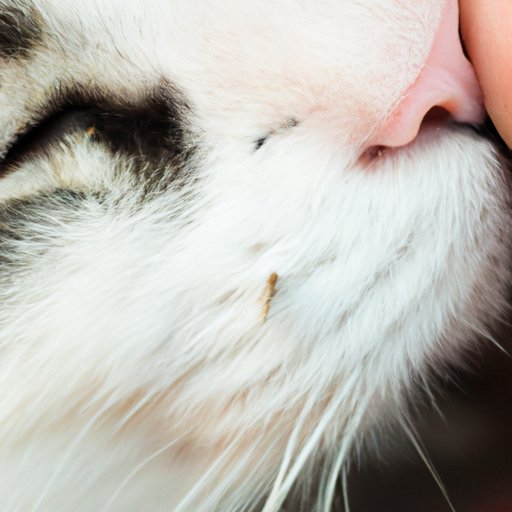
The Importance of Cat Whiskers and the Disastrous Repercussions of Cutting Them
For centuries, cats and humans have shared a unique relationship characterized by companionship, love, and care. Without a doubt, cats make excellent pets and are among the world’s most loved animals. But despite our love for cats, not everyone may understand the harms of some pet grooming practices, such as cutting their whiskers.
Importance of Cat Whiskers
Most cat owners know that a cat’s whiskers are essential to their pet’s wellbeing, but not everyone understands precisely why. Cat whiskers, also known as vibrissae, are highly sensitive, specialized sensory organs covering a significant portion of a feline’s face, upper lip, and chin. These whiskers function as tactile receptors that help the cat to navigate, hunt, and communicate with the outside world effectively.
Admittedly, the importance of cat whiskers may not be immediately obvious. However, without these sensitive organs, cats would lack crucial sensory information. A cat’s whiskers help them detect minute changes in their environment, including the proximity of an object, the direction of the wind, and even the emotions of other animals. Research studies have shown that cat whiskers can detect even tiny air movements, making them essential, especially when hunting in the dark.
The Anatomy of Cat Whiskers
A cat’s whisker is a compound structure consisting of a soft, pliant root structure that leads to a hard, curved shaft. This structure makes them highly susceptible to stimulation from the environment. Cats also have nerve endings at the base of each whisker, making them incredibly sensitive to touch. So much so that if you gently touch your fingers to a cat’s whiskers, they will automatically turn their head to the side for more sensory input.
Knowing how sensitive a cat’s whiskers are, imagine the kind of discomfort and pain a cat would feel if you were to cut it. This practice doesn’t just cause pain; it can hurt your cat’s overall wellbeing in the long run.
The Repercussions of Cutting Whiskers
Cutting your cat’s whiskers may seem like an innocent action, but it can have disastrous results. Cats rely on their whiskers to help them navigate, sense their environment, and communicate with other animals. Without these highly sensitive organs, your cat may not be able to judge the size of an object, making them more susceptible to bumps and injuries. They may become disoriented and anxious, leading to behavioral changes such as aggression, lethargy, and apathy.
Furthermore, cutting a cat’s whiskers breaks down their communication abilities with other animals. Communication between cats involves not only vocalizations but body language as well. When cats feel afraid or threatened, they tend to move their whiskers backward in response to the situation. The position of a cat’s whiskers indicates their attitude, intention, and mood. So by cutting off your cat’s whiskers, you’re inadvertently stifling their ability to communicate with other animals and humans alike.
The Ethical Angle
Sadly, many pet owners cut their cats’ whiskers without realizing the harm they’re causing. Still, various countries and organizations recognize the gravity of the situation and consider cutting cat whiskers illegal. In several nations, pet owners who cut their cats’ whiskers are subject to fines or even imprisonment. The US Animal Welfare Act explicitly prohibits the mutilation of “sensitive tissue involving nerves,” which includes cat whiskers.
Safe Pet Grooming Practices
It’s important to note that proper pet grooming practices don’t involve cutting a cat’s whiskers. When grooming your pet, ensure that their whiskers aren’t getting in the way. You can groom your cat with scissors or clippers but never cut their whiskers. Always prioritize your cat’s wellbeing and take them to expert groomers who understand the importance of cat whiskers and follow all the necessary guidelines.
Role of Whiskers in Cats’ Development
Cat whiskers develop alongside the kitten’s growth and play a fundamental role in their physical and emotional development. At first, most kittens’ whiskers are thin and delicate, with limited functionality. As the kitten grows, the whiskers become more pronounced and functional, eventually reaching maximum sensitivity at adult size. Therefore, when you trim your cat’s whiskers, you’re practically doing away with a fundamental component of their development.
Myths About Cutting Whiskers
Several myths surround the practice of cutting cat whiskers. For instance, some people believe that cutting cat whiskers stops cats from entering smaller spaces. This myth is false, as whiskers aren’t flexible enough to contract and retract in reaction to the environment.
Another common myth is that whiskers grow back quickly. Unfortunately, this isn’t true as it may take weeks or even months for the whiskers to grow back fully. During this time, your cat may feel disoriented, anxious, and unable to communicate normally.
Conclusion
Cat whiskers are a fundamental part of your pet’s anatomy and play a significant role in their physical and emotional development. Cutting your cat’s whiskers can cause irreparable damage to their overall wellbeing and put them at risk of accidents and injuries. As pet owners, we must prioritize our cats’ welfare and consider their unique needs in the grooming process.
We must all work together to understand the importance of cat whiskers, respect them, and avoid cutting them at all costs.




